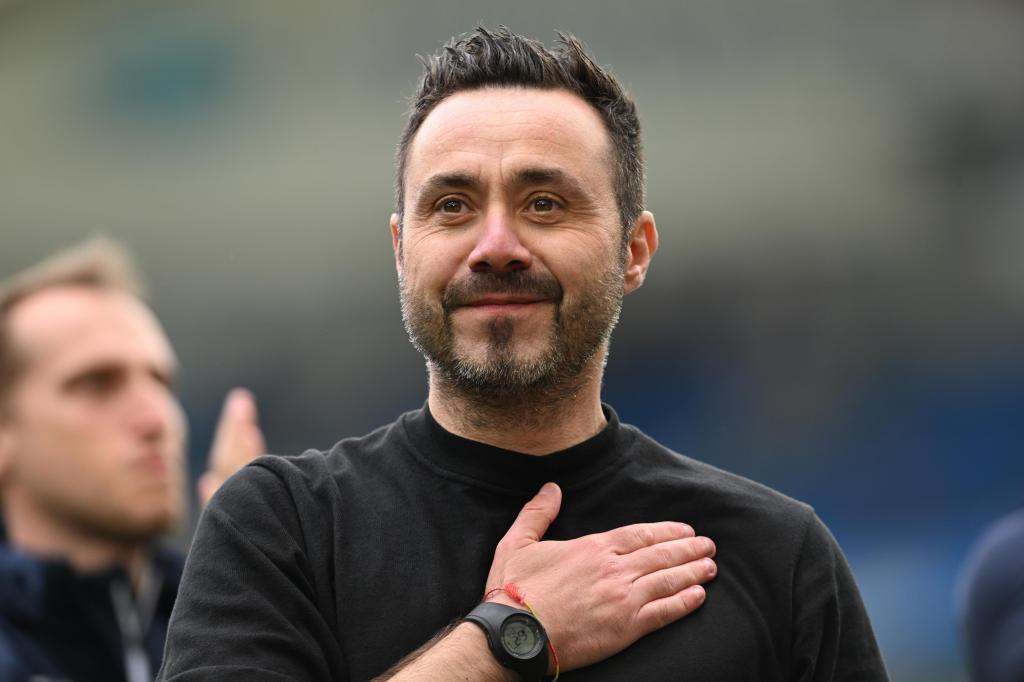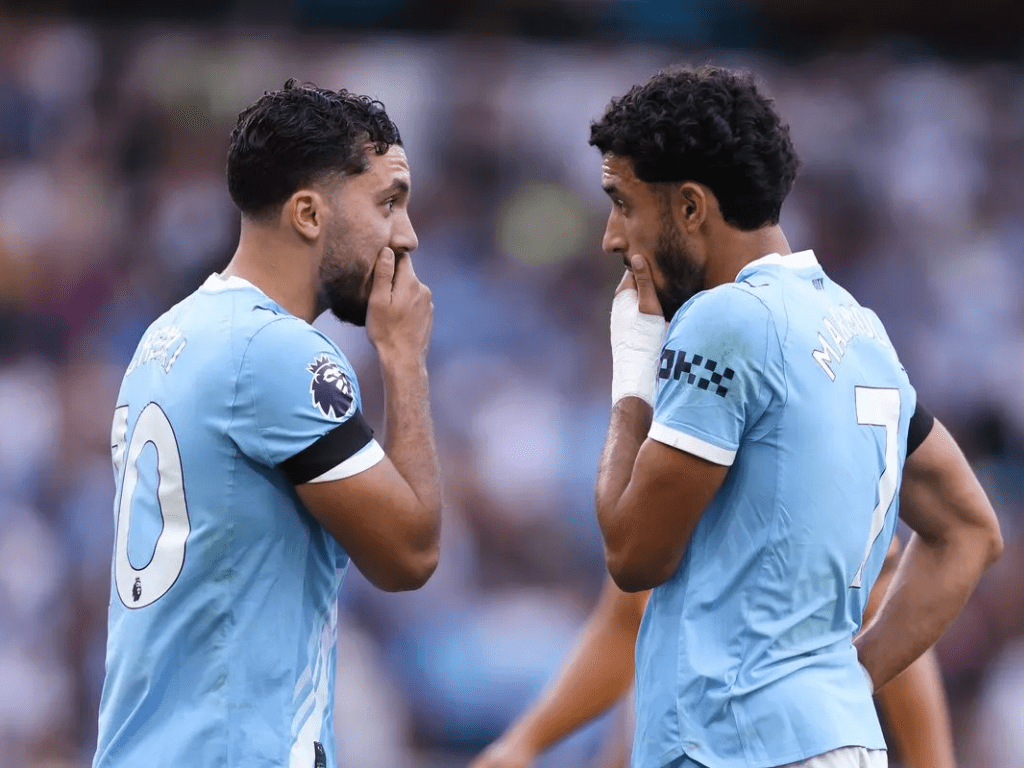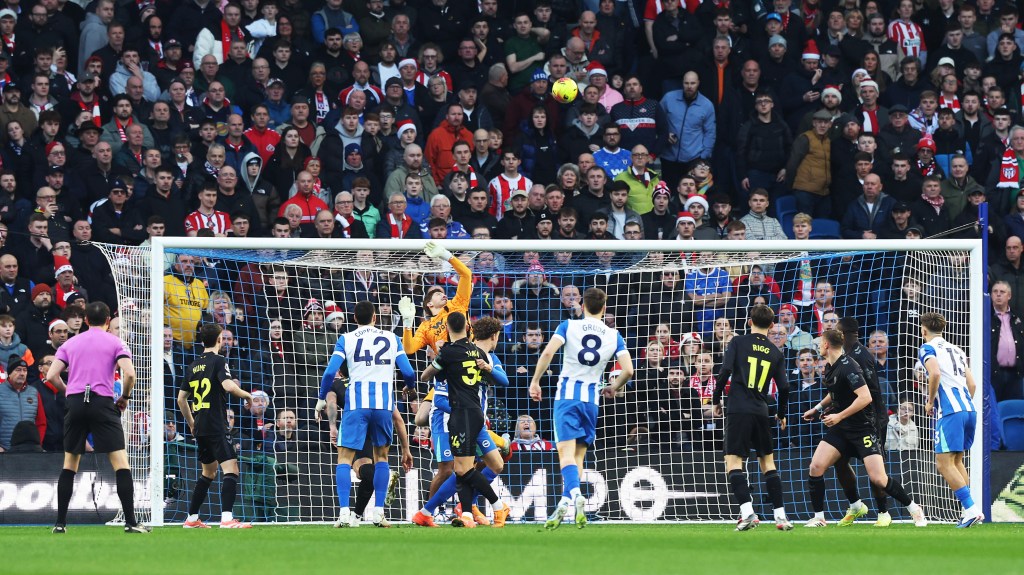Before Brighton and Hove Albion’s final game of the 2023/24 campaign, the club announced that Roberto De Zerbi was leaving after two years as manager. It was a decision that came as a shock to many as De Zerbi seemed to have committed his future to the Seagulls after the 2-1 defeat to Chelsea just 48 hours prior. Now Brighton must find his replacement, here are four potential candidates we could see take over.
Embed from Getty ImagesCandidate 1: KIERAN MCKENNA (Ipswich Town)
Kieran McKenna has made a spectacular success of his first managerial role at Ipswich Town. Appointed in December 2021, at the age of 35 after working at Manchester United assisting José Mourinho, Ole Gunnar Solskjær and Ralf Rangnick. In his first full season in charge at Ipswich, they lost only four league games from 46. That was enough to win promotion with 98 points, finishing as runners-up to Plymouth Argyle. McKenna has just lead the Tractor Boys to a second successive promotion, going up in the automatic promotion spots with Leicester City to the Premier League.
McKenna’s Structural Preferences
Under previous management, Ipswich primarily used back-four formations. Upon taking charge, McKenna quickly transitioned the team to a back-three system, utilising a double pivot ahead of three centre backs in either a 3-4-1-2 or 3-4-2-1 setup. This approach was consistent until his first full season, when he reverted to a back-four for the League One 2022/23 run-in. Ipswich remained unbeaten in their final 19 games, securing promotion while primarily using a 4-2-3-1 formation.
The Double Pivots
Regardless of the defensive formation, McKenna emphasised the double pivot. In the 2022/23 season, Ipswich led the division in possession, passes, and had the third-lowest long-ball count. This short-passing strategy allowed the double pivot to facilitate build-up play through the thirds, advancing into the opposition’s half.
When utilising a back three, the double pivot covered more ground, supporting the wing-backs who were more isolated than in a traditional full-back and winger pairing.
Embed from Getty ImagesDouble Pivot in a 4-2-3-1
In the 4-2-3-1 formation, maintained during their promotion-winning season and into the Championship, the double pivot stayed narrow, rotating or dropping towards the ball to provide options. This movement drew opponents forward, allowing players between the lines to receive the ball via splitting passes. McKenna’s approach involved the number 10, usually Conor Chaplin, moving wide, with the opposite winger narrowing to act as a second number 10, creating another passing option and aiding in defending transitions.
Attacking Strategy
Although McKenna alternated between a 3-4-2-1 and a 4-2-3-1, these structures often merged in possession. When attacking, left-back Leif Davis pushed high and wide, with the left winger moving inside. This left a back three with double pivot cover, locking the opposition in their half and defending counter-attacks. Chaplin adapted well, acting both as a secondary striker and making runs beyond the defense. On the right, he combined with Burns or Kayden Jackson, transforming the 4-2-3-1 into a 3-4-2-1 during when going forward.
Davis and Burns provided over a third of Ipswich’s crosses in the Championship, targeting attackers in central spaces. With Chaplin’s runs, the left-winger narrowing, and the center-forward engaging defenders, Ipswich were particularly effective from cut-backs and dead-ball situations.
Defensive Tactics and Pressing
In League One, Ipswich faced the highest passes per defensive action (PPDA), reflecting opponents’ tendency to sit back, which contributed to Ipswich’s dominance in possession but made it challenging to break through. Despite this, they led in through balls, goals, and touches in opposition penalty areas. This continued in the Championship, where Ipswich had the fourth most shots after 42 games in the 2023/24 campaign. McKenna’s forward play often relied on a powerful central forward to hold up play and link with teammates.
Embed from Getty ImagesHigh Press
Ipswich implement a high press from a 4-2-3-1 base, with wingers pressing full-backs and the center-forward supporting. This strategy aimed to lock play on one side, with the closest full-back and pivots compressing space ahead of the ball carrier. The pivot furthest away from the ball covered deeper areas, screening passes to the centre forward and central areas. The far-side winger narrowed into the middle, pressuring the second centre back, with the number 10 providing additional coverage.
In the Championship, Ipswich maintained a high-press approach, despite facing fewer long passes and more possession-building opponents. They remained among the best for PPDA, applying pressure especially on backward and sideways passes. With a slight drop in possession, McKenna’s ability to organize compact blocks has been tested more, leading to increased duels and interceptions not just in a high press but also from a deeper block, often in the middle third.
Defensive Blocks
Ipswich’s 4-2-3-1 block applied aggressive pressure in wide areas, with wingers pressing outwards and full-backs following closely. The double pivot covered gaps created between full-backs and centre backs. With the number 10 often matching the deepest opposition pivot, Ipswich’s pivots could start deeper, protecting the inside channels earlier. Their mid-block, supported by the wingers pressing, forced mistakes by limiting wide progression and backward play.
Embed from Getty ImagesTwo Brighton players that would do well under McKenna would be Joao Pedro and Valentin Barco. Pedro has shown his ability to perform in behind main striker Danny Welbeck this season. He is also able to play as an out and out striker, holding up the ball and linking up play, whilst stretch beyond the final line of defence when required.
Barco has had an interesting start to life in East Sussex but looked as though he was finding his feet on the final day. Against Manchester United he displayed qualities similar to Ipswich’s Davis has in his breakout season. Barco’s crossing ability and attacking mindset could allow him to flourish under McKenna’s system.
Likelihood of joining Brighton: 7/10
Embed from Getty ImagesCandidate 2: FRANCESCO FARIOLI (Nice)
Francesco Farioli was recommended to the Brighton board by De Zerbi following his departure. Before becoming Nice manager at 34, Farioli was De Zerbi’s goalkeeping coach at Benevento and Sassuolo. His rapid rise saw him managing Fatih Karagümrük and Alanyaspor, where he achieved a fifth-place finish in the 2021/22 Turkish season. His Ligue 1 debut season with Nice saw the team in second place after 20 games and they’ve finished the campaign in fifth, securing a Europa League place next season.
Francesco Farioli’s Tactical Approach
Farioli’s Nice employs a bold 2-3-2 structure for build-up play. Two center-backs form the first line, with a pivot and full-backs ahead, and number eights centrally positioned behind the first opposition press line.
This setup, involving goalkeeper Marcin Bulka, centre backs Dante and Jean-Clear Todibo, and pivot Youssouf Ndayishimiye, creates an overload in their own box. The full-backs make breakaway runs inside, while the same-side eight supports the play, allowing Nice to progress fluidly to the midfield line.
Embed from Getty ImagesFull-backs and Wingers Partnership
Farioli places importance on the relationship between full-backs and wingers, positioning them in the same channel but avoiding the same spaces. Full-backs move inside to create passing lanes and are well-placed for defensive transitions. The wingers seek one-on-one opportunities to exploit space behind their markers.
Attacking Strategy
In attack, Farioli positions five players behind the opposition’s second line, typically the striker, wingers, and number eights. This creates gaps in the defensive setup, allowing the centre back time and space to connect with the striker. The wingers and striker aim for depth and width, enabling the ball-carrier to drive forward and create advantageous three-versus-three situations.
Embed from Getty ImagesCounter-attacking
Nice’s pressing strategy aims to launch counter-attacks, especially when winning possession in midfield. The first pass is directed forward, with attacking players making high-intensity sprints towards the final third. This swift transition aims to minimize passes before attempting a shot.
Defensive Organisation
After 20 games in the 2023/24 Ligue 1 season, Nice had conceded just 11 goals. Farioli’s defensive organization involves marking the first line during the opposition’s build-up to force play wide. In a low block, Nice reduces central spaces, often forcing square passes and mistakes from the opposition. Farioli’s approach emphasizes small details, which have quickly made a significant impact, earning him a potential move to the Premier League.
Embed from Getty ImagesThree Brighton players that would do well under Farioli would be Kaoru Mitoma, Lewis Dunk and Jan Paul van Hecke. Mitoma would benefit hugely from Farioli’s tactics due to the wide system that would allow him plenty of space to force one-on-ones.
Defensive pair Dunk and van Hecke would also succeed under Farioli as they would be very involved in the build up play, something they are used to doing under De Zerbi and have done very well in.
Likelihood of joining Brighton: 3.5/10
Embed from Getty ImagesCandidate 3: RUSSELL MARTIN (Southampton)
Russell Martin began his managerial career at MK Dons in 2019 before moving to Swansea, where he was been praised for his playing style despite working with a tight budget. At 37, Martin is known for his possession-focused philosophy inspired by Pep Guardiola’s teams and the Spanish national team. He’s taken Southampton to the Championship play-off final and could soon be a Premier League manager himself with a win against Leeds this Sunday.
Playing Style
Martin’s teams prioritize dominating possession to maintain control. His MK Dons team led English football in average possession during the 2020-21 season. He remains committed to his style, often improving his system rather than adapting to opposition tactics. Critics sometimes see this as possession without intent, but Martin’s teams have shown the merit of this approach, setting records for passes leading to goals.
Formation and Tactical Approach
Martin generally uses a 3-4-2-1 or a variation of a 4-1-4-1/4-2-3-1. In possession, the defensive midfielder drops between center-backs, allowing full-backs to push high. This defensive midfielder must be adept at transitioning between defense and midfield roles. In the 3-4-2-1, two players behind the striker play narrowly, enabling full-backs to stretch the play wide and creating central overloads.
Embed from Getty ImagesIn and Out of Possession
Martin’s build-up play is slow and measured, emphasizing short passes and maintaining control. The ‘La Pausa’ tactic draws opponents into pressing, creating exploitable gaps. Out of possession, his teams focus on pressing to force opponents wide and restrict central play. This congested central area helps regain control during transitions.
Challenges and Potential
One concern with Martin is his prioritisation of style over results, which could frustrate fans if early results are poor. Brighton supporters have already experienced going through the ‘process’ under Graham Potter, so doing this again under Martin would feel like a step back. However, his commitment to a possession-dominant approach, combined with high-intensity off-the-ball work, aims to keep his teams in control of matches.
Embed from Getty ImagesUnder Martin, Billy Gilmour and Pervis Estupinan would flourish. Gilmour is very good on the ball and comfortbale playing high tempo,short passes. When fully fit, Estupinan is arguably one of the best left-backs in the Premier League and could excel in a similar fashion to Kyle Walker-Peters this season in the Championship. The Ecuadorian is attacking minded, good with his feet and creates plenty of chances, which is very similar to the Saints right-back.
Likelihood of joining Brighton: 5/10
Embed from Getty ImagesCandidate 4: Vincent Kompany (Burnley)
Vincent Kompany is one of Pep Guardiola’s disciples and is currently in charge of Burnley, although they have just been relegated from the Premier League, the Belgian manager remains highly sought after across Europe.
Embed from Getty ImagesFormation
Burnley aim to play a modern possession-based style of football under Kompany in a 4-2-3-1 shape.The fundamental idea within his approach is to have players occupy offensive zones while they look to position themselves between the opponents in the defensive block in both horizontal and vertical lanes, as well as both inside and outside of the opponent’s block.
Build-Up Play
When building an attack, Burnley build with the least amount of players as possible but as many as needed. Another familiar idea is to have one extra player in the backline than the opponent’s strikers, creating a triangle with two centre-backs and a midfielder to outplay one striker or creating a numerical advantage to outplay two strikers. The principal idea while building in an earlier zone on the pitch is to have numerical superiority to ensure clean ball progression.
Attacking Dynamics
The attacking system is consistent while having fluidity and players are smart to occupy various zones to keep the advantage. Both fullbacks have vital roles, the right back typically inverts whilst the left-back becomes part of a back three. Both wingers play high and wide to maintain the width while the number 10 and the other central midfielder operate the half-spaces.
In another building variation, while Burnley faces a 5-4-1 block, they use the minimum number in the first line. Both centre-backs are enough against a single striker which creates a dynamic 2-2-6 or 3-1-6.
Embed from Getty ImagesDefensive Tactics
In defense, Kompany’s Burnley generally have a proactive mentality at any phase, where the players are active and try to retrieve the ball quickly in the quickest possible time to counterattack or retain possession.
Burnley typically press in a 4-2-3-1 scheme, but sometimes adapt into a 4-4-2 mid-block structure, minimising gaps between the lines and waiting for any pressing.
Two Brighton players that would do well in this system are Pascal Gross and Bart Verbruggen. Pascal Gross is a versatile player who can fill in at full back as well as dominate the midfield. The midfield is where Kompany’s players form triangles for ball progression and maintain possession, this is where Gross would excel particularly. However, he would also be apt in the full back role, where he would be inverting into central spaces to help build from the back.
In Kompany’s build up play, the goalkeeper has an active role in creating numerical advantages, this would suit Verbruggen as this is a part of his game that has developed under Roberto De Zerbi. Jason Steele was often preferred in the starting line-up in the first half of the season due to his superior ability on the ball. However, Verbruggen has finished the season with a higher pass accuracy than Steele with 87.4%. Verbruggen has also had almost 200 more live touches of the ball in just four more games played, highlighting his new found ability to be comfortable in possession.
Likelihood of joining Brighton: 2/10
Embed from Getty Images





Leave a comment